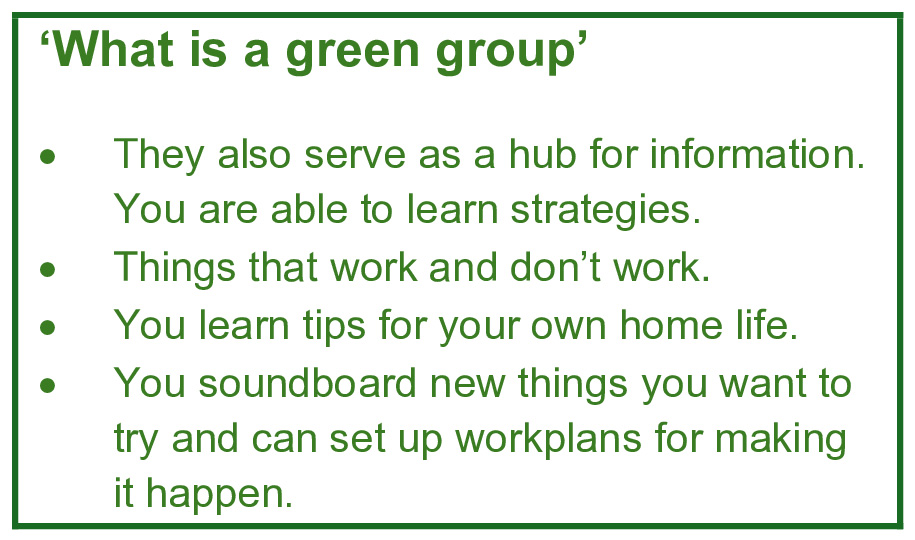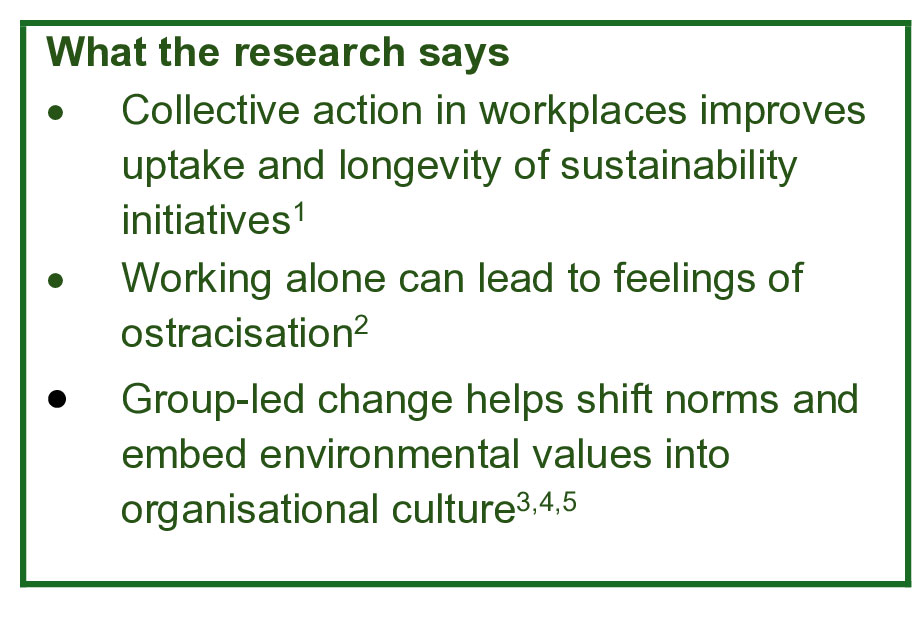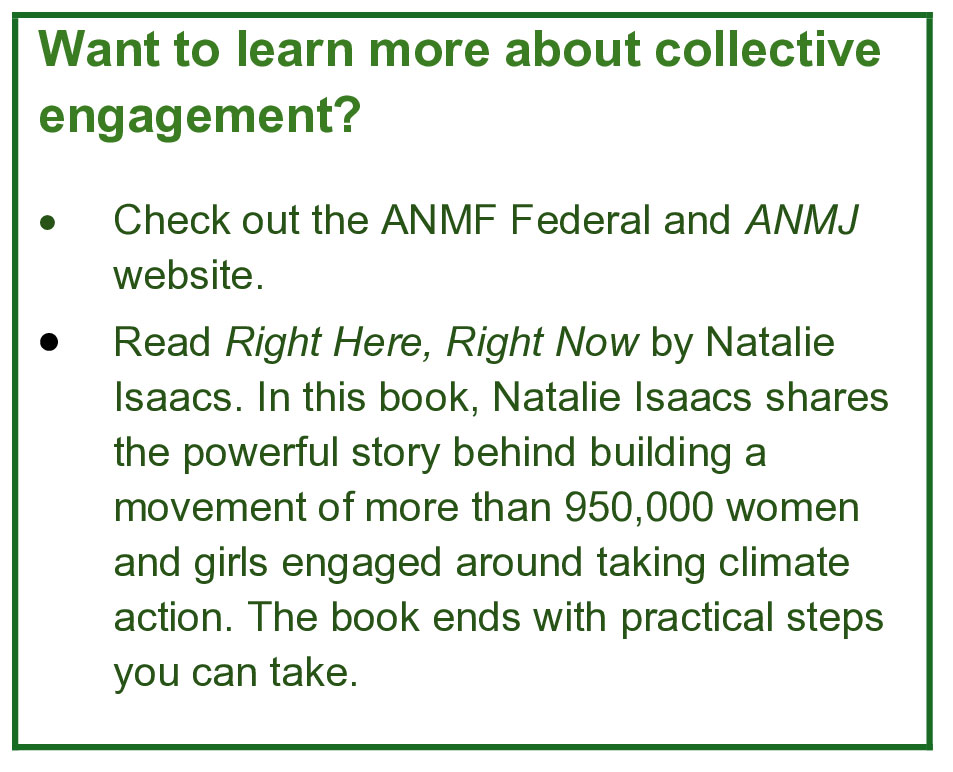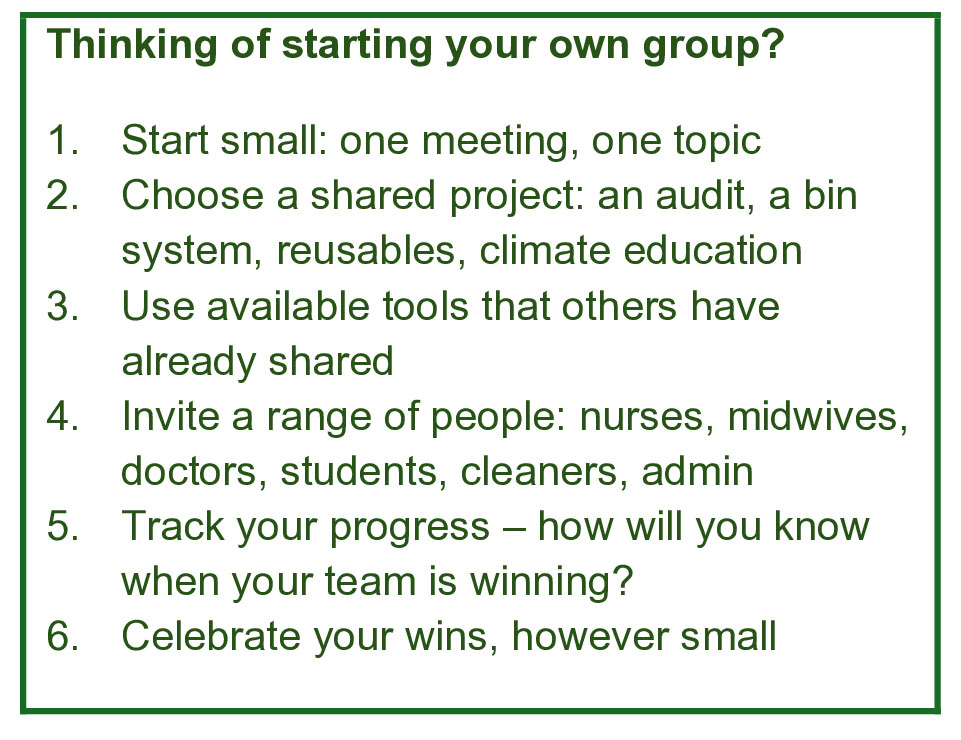Why collective action is one of the best ways to lead change in your workplace and community.
It started with cold curry in my lunch box and a ward office full of nurses. Our sustainability Clinical Nurse Consultant was clicking through slides about PVC recycling while we crammed in our lunch, knowing we all had to be back on the floor in less than 30 minutes.
It wasn’t glamorous. It wasn’t strategic. But in the midst of the presentation someone posed the question, “should we just start a green group?”
And someone else nodded.
That moment, wedged between shift work and leftovers, was the beginning.
The beginning of a conversation that became a group… that became our mini movement.
And the first nursing/midwifery green group I ever joined.
Across Australia, a quiet revolution is happening. Nurses and midwives are forming green groups. We’re not waiting for permission. We’re starting where we are: with gloves, with bins and with our voices. Green groups might seem inconsequential, but their impact is anything but. Wondering how they really make a difference? Let’s take a closer look.
What is a green group?
A green group can go by many names: ‘sustainability group’, ‘climate action group’ or ‘green committee’. At its core, it’s a collective of people working together to create more environmentally sustainable practices, whether in hospitals, homes or the broader community. In healthcare, this might look like a ward-based team reducing single use plastics, a hospital-wide sustainability committee, or a national advocacy group driving policy change. No matter the name or context, green groups usually share two common threads: 1) they exist to foster environmental responsibility, and 2) they bring people together around the shared vision to make change collectively.
Why green groups matter
You’re probably doing things already: recycling where possible, speaking up about unnecessary waste, or using active transport. But doing this work collectively, has the potential to have a bigger impact.

Research shows that environmental action is more successful and more sustainable when done as a group.1 Initiatives embedded into teams, not just driven by individuals, are more likely to stand the test of time. They shape workplace culture; help normalise environmental responsibility3,5 and makes sustainability in nursing and midwifery more visible.
Being in a group also brings resilience. The friendships I’ve made in climate and health have helped me keep going when the challenge feels intractable. We share the load and keep each other inspired to move forward.
This is why, when nurses and midwives ask me, “What’s the single most effective thing I can do to tackle environmental problems?”, my answer is always the same: “Join or start a green group.”
There’s something deeply empowering about being part of a collective.
What kind of group could you start?
There’s no one-size-fits-all approach to what kind of group suits you and/or your work. Some groups start with garnering support from or with their unit manager and hospital administration. Some conduct a small sustainability audit of their ward. Some do a desktop audit – where they collect meaningful reports, guidelines and strategy documents from their organisation and run an in-service to teach others.

Others link in with existing groups or start informal lunch-time catchups. Some campaigns grow into formal committees or state-wide networks. It might take a bit of reflection to work out what you think your organisation needs.
If you can’t find a group that fits, you can start one. You don’t need to be an expert. Just a person who’s willing to gather with others and ask, “What could we do together?”

Groups you can join
If starting a new group isn’t your style, many others are already walking this path. You might:
1. Join your union and join any environmental sustainability committee or group that they may already have
2. Resarch for hospital or state-based nursing green groups on Facebook like the Green Nurses and Midwives Facebook Group
3. Take a look at, or join 1 million Women
4. Become a member of Climate Action Nurses or become involved with the Nursing and Midwifery Planetary Health Collaborative
5. If advocacy isn’t your cup of tea, and you want to try something more hands on, you could volunteer with your local Landcare or local council tree planting group
You’ll find likeminded people. And you might even find yourself reinspired.
Bringing it all together – Building something bigger
I’ve lost count of how many times I’ve turned to my climate network after reading an incredible article I just HAD to share or followed up on a documentary recommendation from a green-group-peer that turned out to be exactly what I needed. Some of my closest friendships have come through my climate networks. There’s a powerful sense of shared humanity that runs through these connections, a feeling that we’re in this together and a reminder of what we are fighting for.
Nature rarely works alone. Trees connect through roots. Birds migrate in flocks. Bees thrive in hives.
Nature thrives when it works in connected groups and so do nurses and midwives.
Maybe we’re not meant to tackle this climate challenge solo either.
Maybe the first step is finding each other… and then getting to work.

References
1 Pretty J. Social capital and the collective management of resources. Science. 2003 Dec 12;302(5652):1912-4.
2 Terry L, Bowman K. Outrage and the emotional labour associated with environmental activism among nurses. J Adv Nurs. 2020;76(3):867–77. https://doi.org/10.1111/jan.14282
3 Deutsch M, Gerard HB. A study of normative and informational social influences upon individual judgment. J Abnorm Soc Psychol. 1995;51(3):629.
4 Terry DJ, Hogg MA, White KM. The theory of planned behaviour: self‐identity, social identity and group norms. Br J Soc Psychol. 1999;38(3):225–44. https://doi.org/10.1348/014466699164149
5 White KM, Smith JR, Terry DJ, Greenslade JH, McKimmie BM. Social influence in the theory of planned behaviour: The role of descriptive, injunctive, and in-group norms. Br J Soc Psychol. 2009;48(1):135–58. https://doi.org/10.1348/014466608X295207








